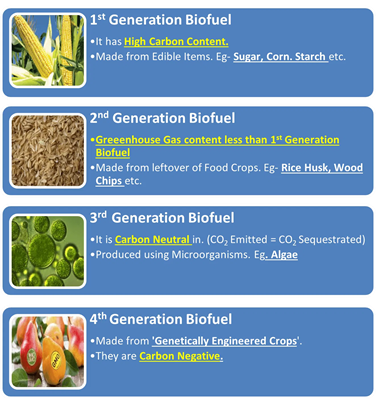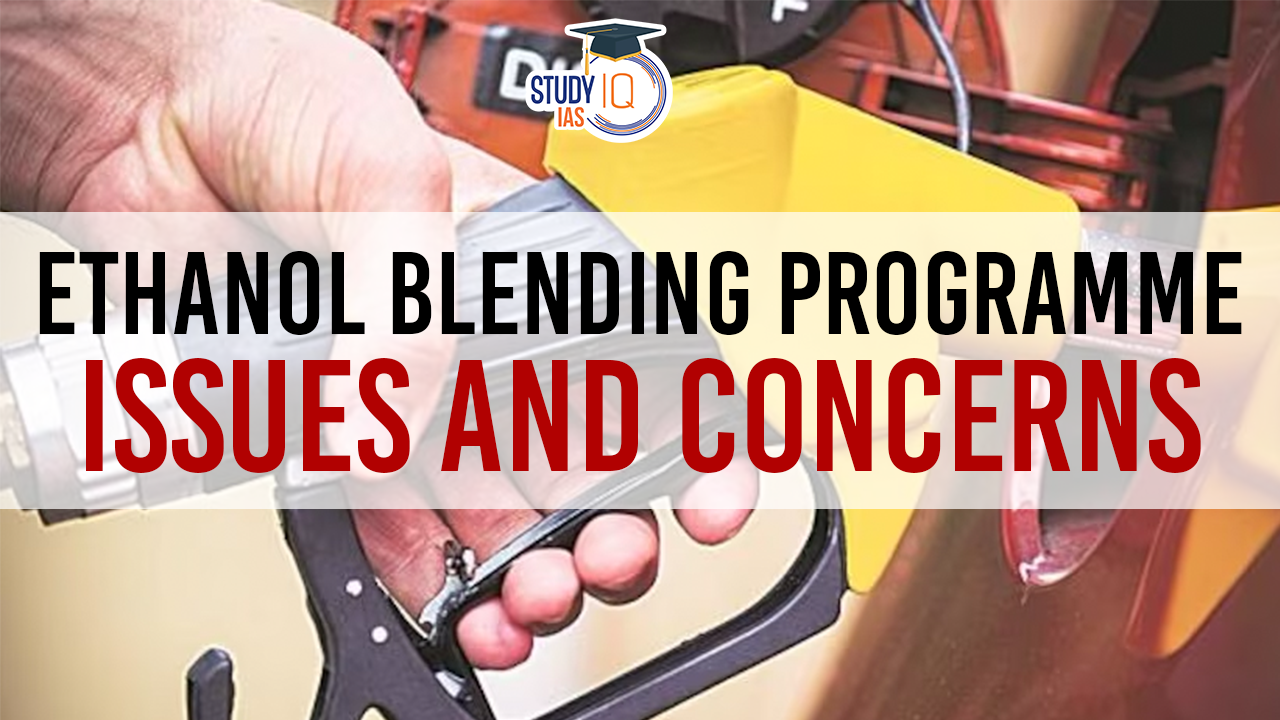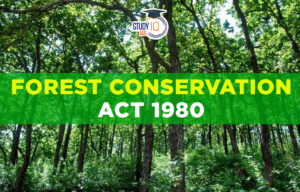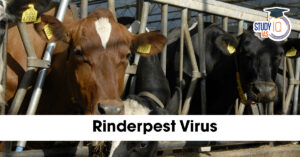Table of Contents
Context: The Ethanol Blended Petrol (EBP) programme in India aims to reduce dependence on fossil fuels and lower carbon emissions by blending ethanol with petrol. However, concerns have been raised about its environmental impact, particularly in regions like Andhra Pradesh.
About Ethanol Blended Petrol Programme (EBP)
- It was introduced in 2001 as a pilot project in India to address concerns related to growing energy consumption, rising oil imports, and increasing carbon emissions from vehicles.
- The programme promotes blending ethanol—produced from grains like broken rice and corn—with petrol to reduce fossil fuel dependency and encourage renewable energy sources.
- In 2020, the Government of India advanced the ethanol blending target from 2030 to 2025, setting an ambitious goal of 20% ethanol blending in petrol.
- It is an initiative of the Union Ministry of Petroleum and Natural Gas to increase the use of ethanol in petrol.
- It is implemented throughout India except for Andaman Nicobar and Lakshadweep islands.
- As Oil Marketing Companies (OMCs) here sell petrol blended with 10% ethanol.
- Target: To blend 20% ethanol with petrol (E20) by 2025. (Previous Target- 2030)
Objectives of the EBP
- Reducing the country’s dependence on crude oil imports
- Conserving foreign exchange
- Boosting the domestic agriculture sector
- Increasing value addition in the sugar industry.
Targets and Progress of the EBP Programme
- Current Status (2024): The ethanol-blended percentage in petrol stands at 15%
- Target (2025-26): Achieve 20% ethanol blending in petrol.
- Requirement: 1,016 crore litres of ethanol annually to meet the 20% blending target.
- Production Capacity (2022): 947 crore litres of ethanol in India.
Key Ethanol Producing States
- Andhra Pradesh
- Maharashtra
- Haryana
- Punjab
What Is Ethanol?
Ethanol (chemical formula: C2H5OH) is a type of alcohol produced by fermenting sugars found in plants. It can be used as a fuel source or an additive in other products.
- It is a clear, colourless, and flammable liquid. It is also known as Ethyl Alcohol (C2H5OH)
- Ethanol is produced through the fermentation of sugars by yeast or other microorganisms.
- Once blended, ethanol cannot be separated from the petrol.
- As the ethanol molecule contains oxygen, it allows the engine to more completely combust the fuel, resulting in fewer emissions and thereby reducing the occurrence of environmental pollution.
- It has a higher octane number than gasoline, hence improving the petrol octane number.
Advantages of Ethanol Blending
|
Advantages of Ethanol Blending |
| Reduced reliance on fossil fuels: Biofuels decrease dependence on limited and polluting fossil fuels, lowering greenhouse gas emissions and mitigating climate change.
For example: Grain-based ethanol cuts greenhouse gas emissions significantly by 44 to 52% compared to gasoline, according to the US Department of Energy’s Argonne National Laboratory. |
| Renewable energy source: Biofuels are grown from renewable crops, ensuring long-term energy availability, unlike finite fossil fuels. |
| Support for agriculture: Biofuel crops create a new market for farmers, boosting rural economies and providing additional income. |
| Technological advancement: Research in biofuel technologies drives innovation in the renewable energy sector, leading to further advancements. |
Generations of Biofuels

Challenges Associated with Ethanol Blending
Production Challenges
- The government’s target to achieve 20% ethanol-blended petrol by 2024-25 is facing setbacks due to restrictions on ethanol production from sugarcane juice in 2023-24.
- This has led to a projected decline in domestic ethanol production by 20%, potentially reducing the ethanol blending rate to less than 10% in the ethanol supply year 2023-24, compared to 12% in the previous year.
Vehicle Compatibility
Vehicles in India are currently designed for E0 and calibrated for E10 (10% ethanol blend). Using E20 (20% ethanol blend) may result in a loss of fuel efficiency – approximately 6-7% for four-wheelers and 3-4% for two-wheelers.
- Modifications in engines are required to reduce this efficiency loss.
- Moreover, the use of E20 will necessitate changes to the fuel lines, as well as some plastic and rubber parts, due to the corrosive nature of the fuel.
- The engines will also need to be recalibrated for the required power, efficiency, and emission-level balance due to the lower energy density of the fuel.
Impact on Emissions
There are concerns regarding unregulated emissions such as acetaldehyde, which could be higher with E10 and E20 compared to normal petrol.
- The overall impact on emissions, both regulated and unregulated, needs careful monitoring and assessment as India progresses towards higher ethanol blending.
Potential for Food Scarcity
Diverting crops for fuel can reduce food availability, leading to higher prices and food insecurity.
- The increase in the manufacturing of food-based raw materials for ethanol production could impact food security. This concern is heightened given India’s ranking on the World Hunger Index 2021.
Competition for Land
Biofuel crops can compete with food production and conservation needs, potentially leading to land-use changes and biodiversity loss.
Minimum Support Price
Ethanol production costs in India are higher compared to countries like the U.S. and Brazil. This is partly due to the government-fixed cost of raw materials like sugarcane and food grains, which are set to support farmers. This policy impacts the economic viability of the Ethanol Blending Programme (EBP).
| Government Efforts To Advance Ethanol Blending In India |
|
Environmental Impact of Ethanol Production
Water Resource Depletion
- Ethanol factories require 8-12 litres of water per litre of ethanol.
- Groundwater exploitation occurs, especially in perennial river basins like the Krishna, which already face water shortages.
- Farmers in Andhra Pradesh fear ethanol production will deplete water for drinking and agriculture.
Air, Water, and Soil Pollution
- Harmful emissions from ethanol factories include acetaldehyde, formaldehyde, and acrolein, which are known carcinogens.
- These pollutants do not find a mention in environmental clearances, raising concerns about oversight.
- Effluent discharge from factories has polluted canals and drinking water sources in Andhra Pradesh.
Factory Location & Public Concerns
- Red Category Industry: Ethanol distilleries have a pollution score of 60+.
- However, the government has exempted them from public hearings, allowing their setup near human settlements.
- Protests have been ongoing in the Gummaladoddi, Gandepalli, and Arugolanu villages of Andhra Pradesh against pollution from ethanol factories.
Contradictions in Environmental Gains
- A Niti Aayog report states that 20% ethanol blending reduces:
- Carbon monoxide emissions decreased by 30% in four-wheelers.
- Carbon monoxide emissions by 50% in two-wheelers.
- However, environmentalists argue that the gains are negated by air and water pollution from ethanol production.
Way Forward
- E20 Mission for Fuel Independence: India’s aim to lessen its dependency on fuel imports through the E20 initiative is commendable, but the 2025-26 target is ambitious.
- Competition for Resources: Achieving this goal may lead to a clash for crop and land resources between fuel and food crops, necessitating a balanced approach.
- Addressing Undernourishment: With a significant undernourished population, India needs to expand the cultivation of pulses, oilseeds, and horticultural crops.
- Focus on Agricultural Productivity: Enhancing crop yields through advanced seeds and farming techniques is crucial, especially if these crops are used for biofuel production.
- Land-Use Planning: A strategic plan for land use is vital to avoid dedicating existing croplands to fuel production, considering the decline in arable land in India.
- Utilising Fallow Land: Prioritising the use of the increased fallow land, around 4.3 million hectares between 1978-79 and 2018-19, for biofuel crop production could be a solution.
- Second Generation (2G) Biofuel Technologies: These technologies, which use waste materials like wheat straw, corn cobs, wood, and agricultural residues for bioethanol production, should be further researched and developed for commercial viability.
- Avoiding Food vs. Fuel Dilemma: The roadmap should ensure no trade-off between achieving food and energy security, as both are equally important.


 Salkhan Fossil Park Joins UNESCO’s Ten...
Salkhan Fossil Park Joins UNESCO’s Ten...
 Forest Conservation Act 1980, Objectives...
Forest Conservation Act 1980, Objectives...
 Rinderpest: Causes, Transmission, Sympto...
Rinderpest: Causes, Transmission, Sympto...





















